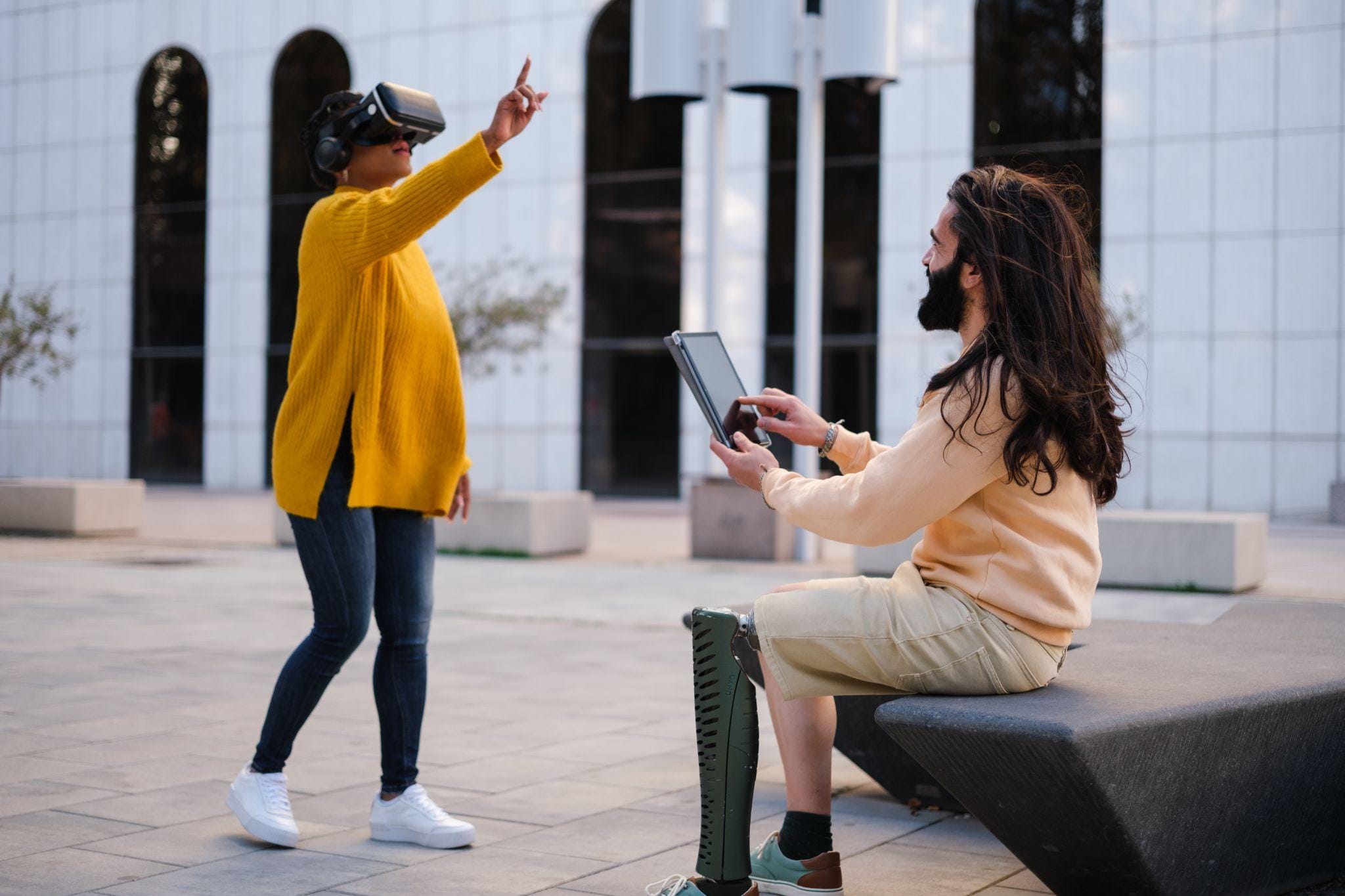How AR is Enhancing Customer Service in Retail and eCommerce
Augmented Reality (AR) has come a long way from being a futuristic concept to becoming a vital tool for businesses. AR has transitioned from a marketing side to a keystone of customer service. With the ability to bridge the gap between physical and digital experiences, AR is revolutionizing how businesses interact with customers before, during, and after purchases

Personalized Product Discovery: Turning Browsing into Experiencing
One of the major challenges for retail and eCommerce is to replicate the in-store experience online. AR steps in by offering customized product discovery through features such as virtual try-ons, room visualizers, and product simulations.
For example, home furnishing brands allow customers to use AR to see how furniture fits into their space. Users can adjust dimensions, colors, and designs in real time, ensuring a perfect match for their home aesthetics. This level of interactivity enhances customer confidence, minimizing returns and dissatisfaction.
Benefit to Retailers: Reduced return rates, higher customer satisfaction, and longer website session times.
Benefit to Customers: A stress-free shopping journey that mimics the in-store experience.
AR-Powered Virtual Assistance for Post-Purchase Support
Post-purchase support is a critical component of customer service, and AR is transforming this experience with innovative solutions.
For example, AR-powered instruction manuals guide customers in assembling furniture or using gadgets. By overlaying step-by-step guides onto the product through an app, customers can troubleshoot issues independently.
Some businesses even employ AR in customer service chats. Imagine a user pointing their smartphone at a malfunctioning coffee machine, and an AR assistant highlighting problem areas while suggesting solutions in real time.
Benefit to Retailers: Reduced support team workload and faster issue resolution.
Benefit to Customers: Empowerment to fix issues independently without waiting for help.
Immersive In-Store Experiences with AR
For brick-and-mortar retailers, AR bridges the digital divide by offering immersive experiences within physical stores. AR-enabled mirrors and kiosks allow customers to visualize outfits without trying them on. Similarly, grocery stores are integrating AR apps that suggest recipes when a customer scans fresh produce

In eCommerce, AR gamification strategies such as treasure hunts or virtual pop-up stores create memorable customer interactions. These tactics not only improve customer engagement but also provide valuable insights into user preferences and behaviors.
Benefit to Retailers: Higher footfall and data-driven personalization.
Benefit to Customers: A dynamic and engaging shopping experience.
Seamless multiple-channel Integration
AR is the keystone for businesses striving for seamless multiple channel integration. Customers now expect consistency whether they shop in-store, online, or via mobile apps. AR facilitates this by ensuring uniformity in product visualization and interactivity across all channels.
For example, a customer can configure a product through an AR app at home and later see the same configuration displayed in-store via an AR-enabled stand. This continuity ensures that customers feel in control of their journey, reducing decision fatigue.
Benefit to Retailers: Consistency in branding and messaging across channels.
Benefit to Customers: Effortless transitions between digital and physical shopping platforms.
Enhancing Customer Loyalty Programs with AR
AR is also being leveraged to elevate loyalty programs. Retailers are introducing AR-based scavenger hunts, where loyal customers can unlock points or rewards by finding virtual items within stores. In eCommerce, AR badges or trophies encourage customers to explore product catalogs, rewarding them for engagement.

Additionally, AR-enhanced unboxing experiences add a layer of excitement to purchases. Upon scanning a product, customers might see a congratulatory animation or receive a personalized thank-you message from the brand.
Benefit to Retailers: Increased customer engagement and repeat business.
Benefit to Customers: A more rewarding shopping journey.
Reducing Purchase Anxiety with AR Visualization
AR helps tackle purchase anxiety—a common concern in eCommerce—by providing detailed visualization options. Customers buying high-value items, such as electronics or jewelry, can explore intricate details through AR zoom-ins, 360-degree views, and size comparisons.
For instance, AR apps for electronics retailers let customers virtually place TVs or sound systems in their living rooms, ensuring they make informed decisions.
Benefit to Retailers: Enhanced brand trust and reduced cart abandonment.
Benefit to Customers: Greater clarity and assurance before making a purchase.
Expanding Accessibility with AR-Driven Features
Inclusivity in customer service is another frontier AR is exploring. By incorporating AR features, businesses are making shopping more accessible for customers with disabilities.
For example, AR apps can translate product information into sign language when scanned. Similarly, text-to-AR features allow visually impaired users to hear detailed product descriptions or instructions.
Benefit to Retailers: Positive brand perception and expanded customer base.
Benefit to Customers: Equal access to shopping experiences.
Revolutionizing Post-Purchase Engagement
The customer journey doesn’t end after a purchase; it evolves into engagement. AR ensures post-purchase delight by enabling creative interactions.

Brands are using AR to provide exclusive content or experiences related to a product. For example, scanning a purchased toy might unlock an AR game, or scanning a book might provide additional chapters or author interviews.
This extends the value of the product, fostering loyalty and encouraging repeat purchases.
Benefit to Retailers: Higher customer retention and lifetime value.
Benefit to Customers: Added value and ongoing engagement.
Challenges and Future of AR in Retail
Future of AR in Customer Service
Advancements in 5G Technology:
Faster and more stable internet connections will enable real-time AR experiences without latency issues, making interactions smoother and more engaging.
Emergence of AR Glasses:
Lightweight and user-friendly AR glasses will eliminate the need for smartphones, making AR experiences more immersive and accessible.
Improved Accessibility:
As AR technology becomes more affordable, retailers can target a wider audience and increase adoption rates.
Integration with AI:
Combining AR with AI-driven personalization will create hyper-targeted customer service experiences, boosting satisfaction and loyalty.
Competitive Edge for Early Adopters:
Brands that invest in AR innovations early will position themselves as market leaders, attracting tech-savvy customers and staying ahead of competitors.
Retailers should focus on overcoming current challenges while preparing for these promising advancements to maximize the benefits of AR in customer service.
Final Thoughts
Augmented Reality is more than just a trend in retail and eCommerce; it is a powerful tool reshaping customer service. By enhancing personalization, reducing purchase anxiety, and elevating post-purchase engagement, AR ensures that businesses deliver exceptional customer experiences.
As the technology continues to evolve, brands that invest in AR now will reap the rewards of increased customer loyalty, better sales, and a stronger market presence in the years to come.
Comments
Your comment has been submitted successfully!